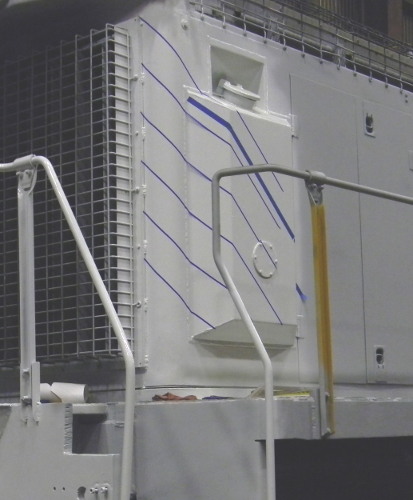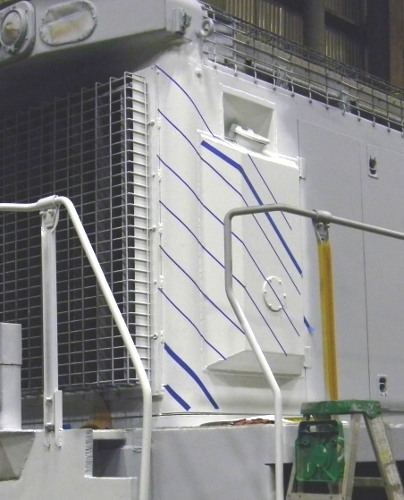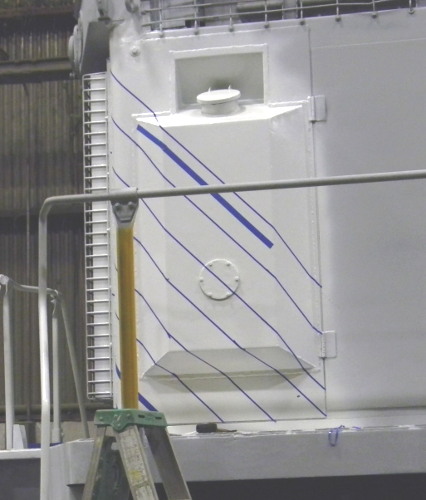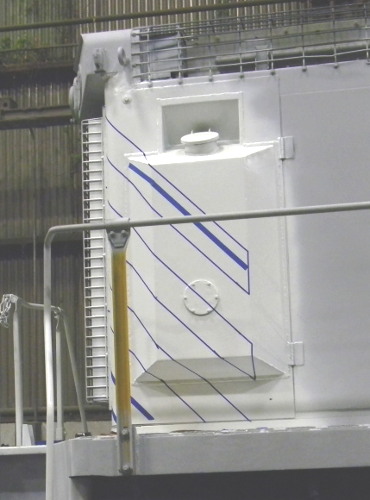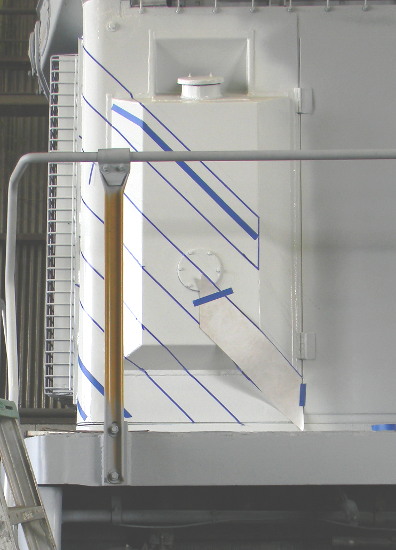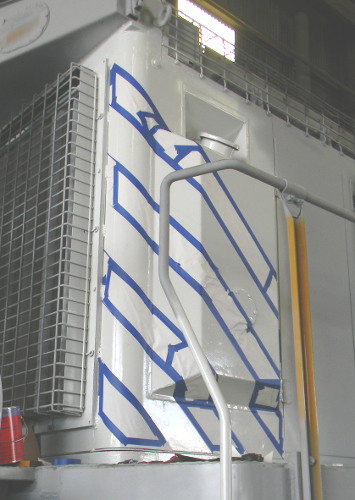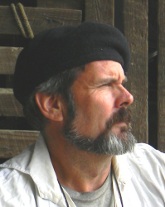You are hereBlack River switcher 5
Black River switcher 5
On this switcher, there are unusual sandboxes on the end of the car body, the end opposite of the cab. I saw another switcher owned by this same railroad, it had the stripes in this area, but not the protruding sandbox. This proved to be one of the most challenging graphics project I ever encountered. Not because it required creativity of design; but because it demanded creativity in making the design configure to the format. If I recall, I tried about 8 different ways to make it look right. I could have settled for less, and told the client “Sorry, that's all I could come up with”; but instead, I kept trying to find that elusive right way.
Initially, I thought I would breeze through this part easily with the help of my laser line making tool; but that tool didn't help at all. In the first picture, I've labeled each area with a letter, so that I can better describe the steps. In this picture, you can see a wide blue tape line; this is where the laser line was. I left this on through much of the layout, in case it would help at some point.
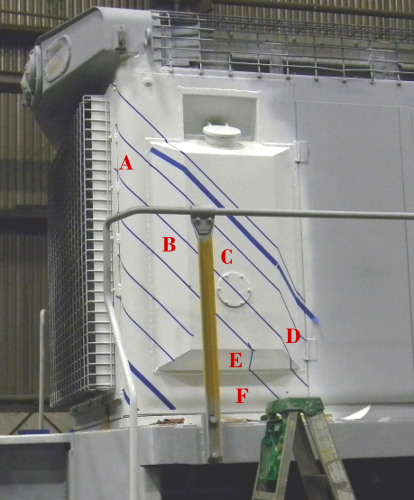 Diagram
Diagram
This layout was specified by the owner, so that it would match his other locomotives. The most useful aid was a 6 inch wide strip of paper that I wrapped around curves and corners. Starting at area A, I wrapped the paper strip around the curved corner, going downward at the appropriate angle. There's been some time between doing the work, and writing this; so I'll describe it as well as I can remember. I think that on area B, I first tried making the stripes conform to the angle of the laser line, but that was visually disastrous.You can see the results in "Sandbox_2", the stripes in area B got too wide. It returned to the correct width after passing the corner between area B and C. Conversely, if I had forced them to be the correct width on area B (while following the laser angle), then they would become too arrow once they passed the corner between B and C. My rational for trying to follow the laser angle on area B was that I've done similar things over the years; and it's understood that it will only look good at one angle. So choose which one that will be, and conform to it. I always choose the most right angle (90 degrees) horizontal and vertical. I will sometimes change the vertical angle, if I know the viewers will always be lower. In this case, I figured that the laser threw the visually straightest line from its vantage, that's why I tried making the stripe follow that line in area B.
I think what ended up working was to have the paper strip aligned with the stripe(s) in area A, then, pushing it into the valley corner between area A and area B, lay it across area B, and draw the stripe there. I'll call that move “the Lay”. I can't remember if it wrapped around the corner between area B and C resulting in the same angle as the laser line; or whether I adjusted at that point to conform to the laser line angle. At any rate, areas A,B, and C were pretty much straight forward after that. The real difficulty came when I went down into the lower right corner. I guess that since I'm using a fixed dimension (the paper strip) over an object with variable dimensions (the sandbox with angled sides), the distortions encountered all come together at that last corner, and man, they sure did.
The remaining pictures show some of the troubles I had in this area. In "Sandbox_3" I've fixed the stripes in area B. In "sandbox_4" you can see that the stripe in the lower right corner is pinched. In "Sandbox_5" you can see where I was ready to give up, and make all the stripes shorter. But that wouldn't comply with the sketch supplied by the customer. What ended up working in this area is what I call “the Flop”. You can see that in "Sandbox_6". Instead of laying directly against the metal, and being forced into the corners; the way “the Lay” does, “the Flop” curves more or less through the air to reach the car body. In order to make this work, I made each of the stripes in area E a little less wide than they were supposed to be. I averaged the distortion out among all the stripes down there, so that it makes an optical illusion; people assume the stripes are 6 inches wide down there, but they're not. If I recall, I also changed the angle of the stripes in area D.
What is interesting is how the stripes actually almost go backwards, but look "right" at a certain angle. Personally, I even like the bent version, has a very German industrial look to it. See this effect in "Sandbox_7".
